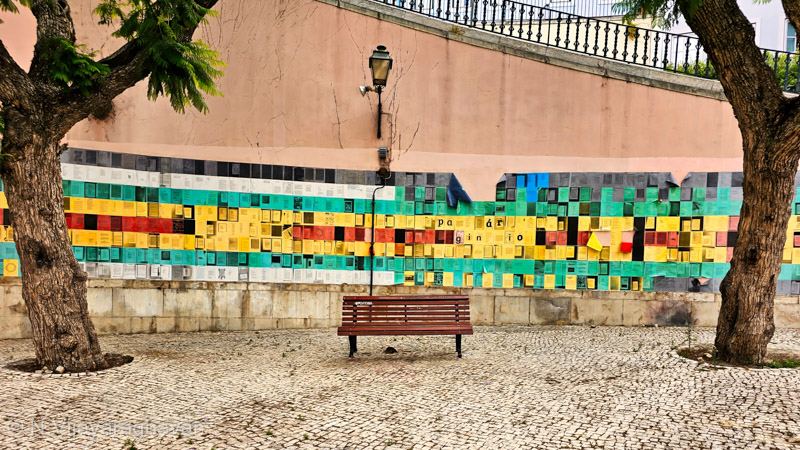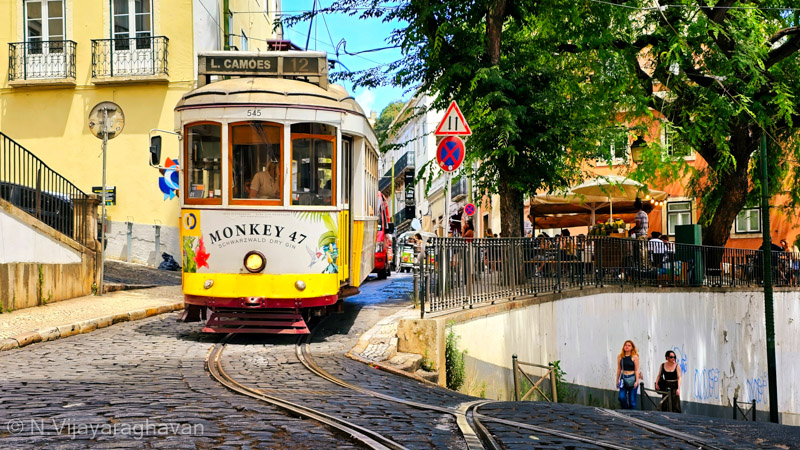
Lisbon, the vibrant capital of Portugal, is one of the oldest cities in Western Europe, yet it comes to my attention only when I see pics of its famous Yellow tram. Finally had the chance to visit it for a weekend and found that the city has a great mix of grand medieval structures, lively streets, and sunny days. Apart from the squares, even the sidewalks have a beautiful mosaic of small black and white stones (called “calçada portuguesa”), adding to the city’s unique charm. A street photographer might end up spending weeks here. Over a weekend, I visited most of the popular sites, some even twice in different lighting conditions.
Castelo de Sao Jorge
The first stop in the morning was Castelo de São Jorge, perched majestically atop a hill and offering panoramic views of the city below, with its vibrant rooftops and the shimmering Tagus River stretching into the distance.
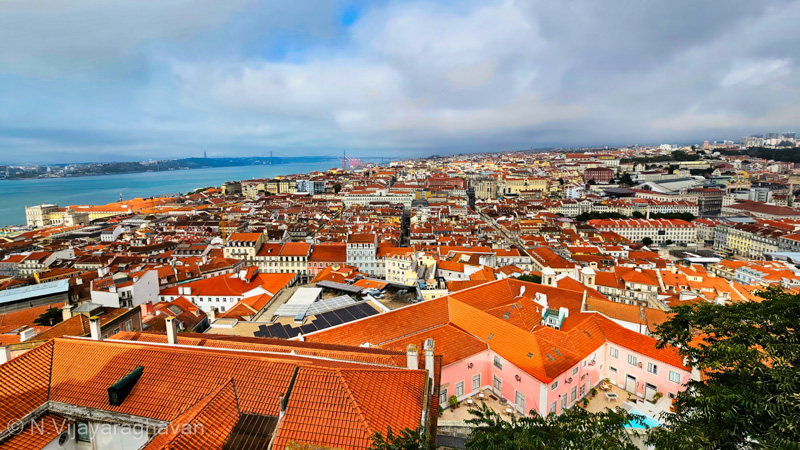



The castle is home to many peacocks..
Baixa district
The Baixa district has some interesting places like the famous Santa Justa lift, Rossio Square and Praca do Comercio. As I was coming from San Jorge’s castle, I skipped going up the Santa Justa lift.
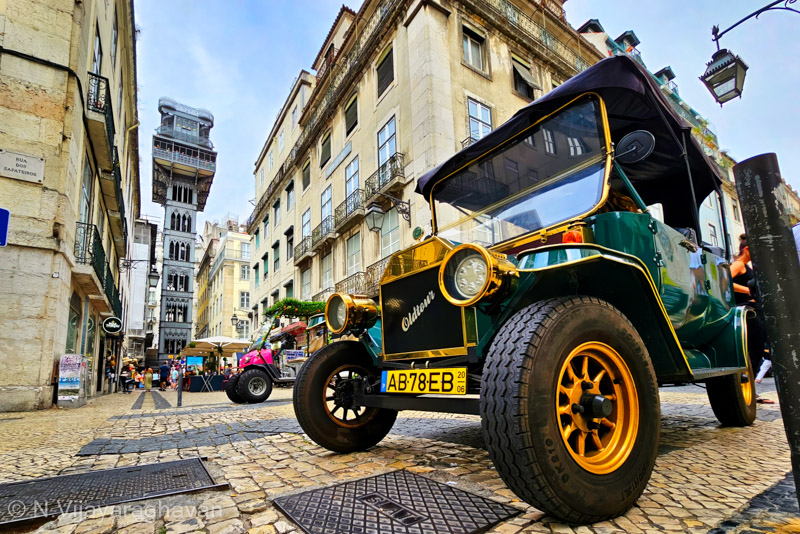
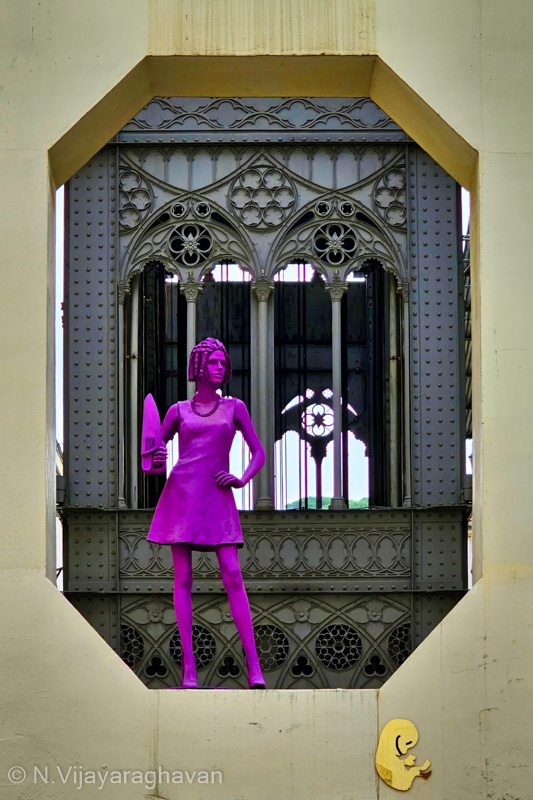
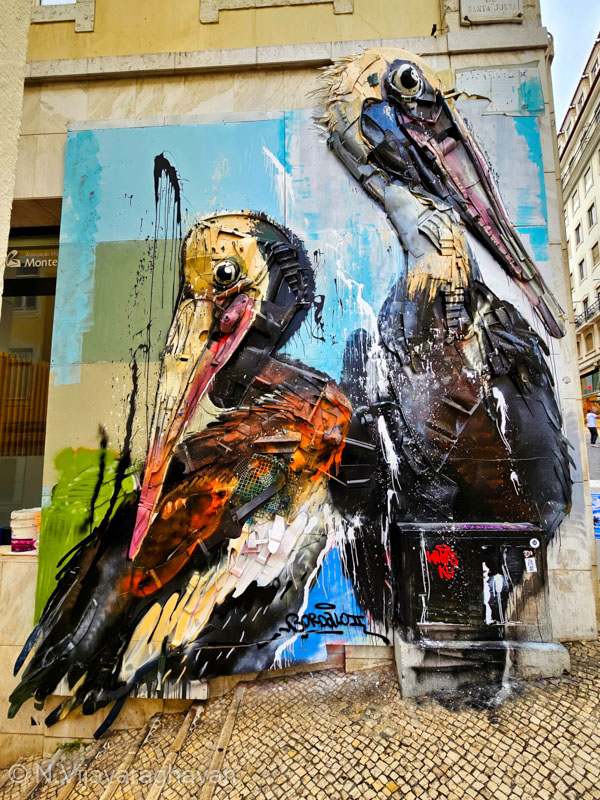
Behind the Santa Justa lift
Rossio Square
Also called King Pedro IV Square, this area’s wave-patterned cobblestones are pretty captivating, giving a 3D perspective. In fact, throughout the city, one gets to enjoy the sight of beautiful cobbled streets. Many of the cobbles are in interesting shapes and patterns.
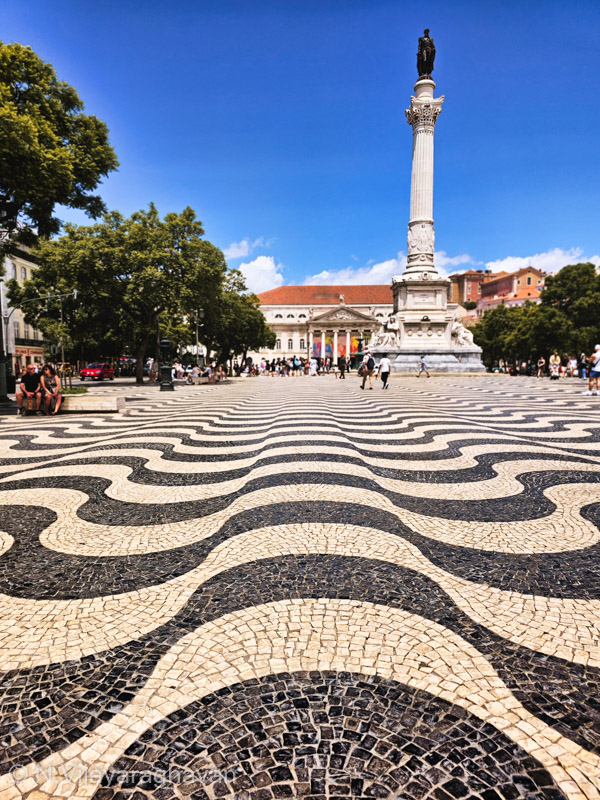
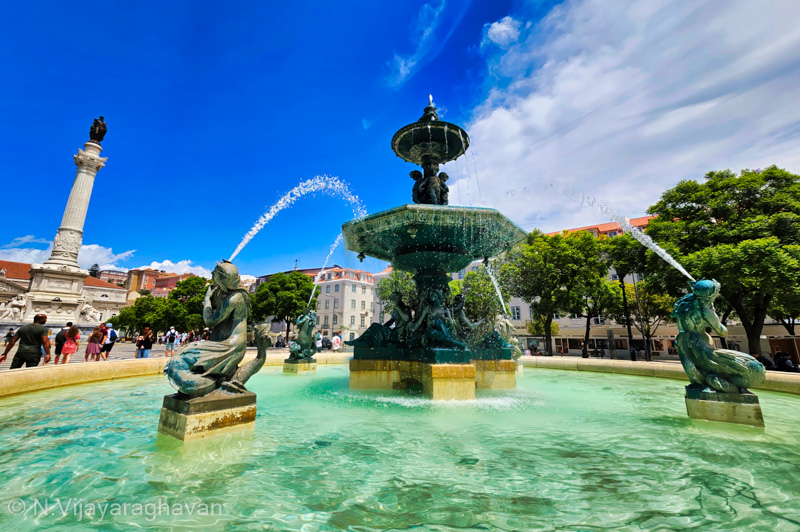
Praca do Comercio
This is one of the highlights of Lisbon’s historic center. Before air travel, this beautiful square was where visitors would disembark from their sea voyages. A majestic Arco da Rua Augusta and elegant yellow buildings embrace the square. The stunning riverside promenade offers picturesque views of the Tagus River.
The road leading to Arco da Rua Augusta is a bustling place with street performers and great food. This road connects to Rossio Square at the other end.

Alfama district
Alfama is Lisbon’s oldest and most charming neighborhood. Its narrow streets are filled with the vibrant colors of the traditional tiled facades, hanging laundry swaying in the breeze, and old-fashioned trams gliding through the neighborhood. It is a place to get lost in the maze of narrow streets, staircases, and passages.

Miradouro de Santa Luzia
The Miradouro de Santa Luzia is a picturesque viewpoint adorned with vibrant bougainvillea. It offers stunning vistas of Lisbon’s orange rooftops, the winding streets of Alfama, and the distant São Jorge Castle. Lisbon’s beauty is amplified by the warm sunlight, creating picture-perfect moments.
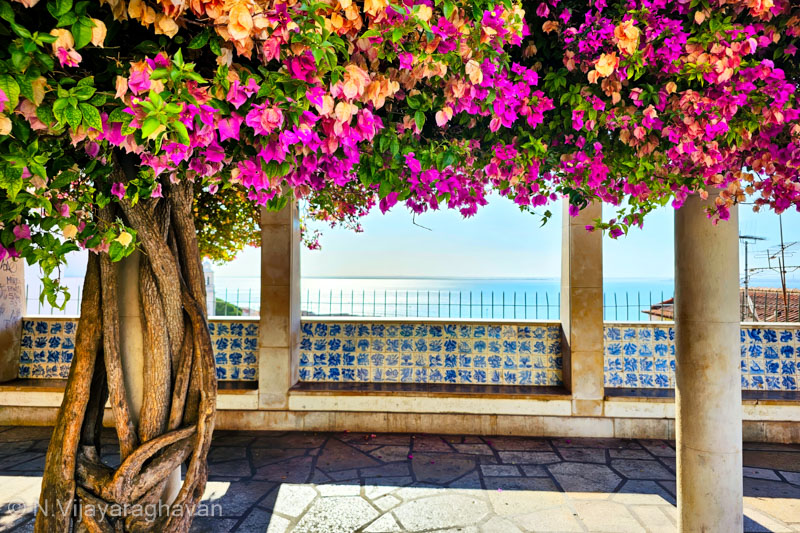
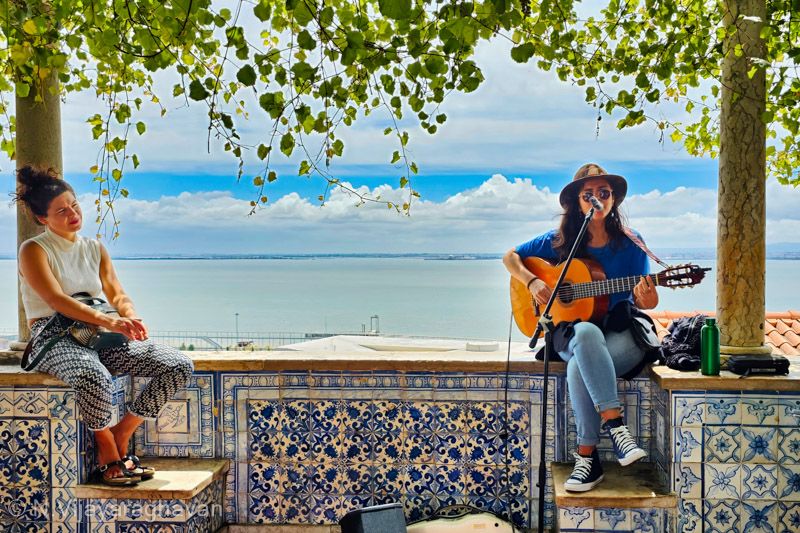
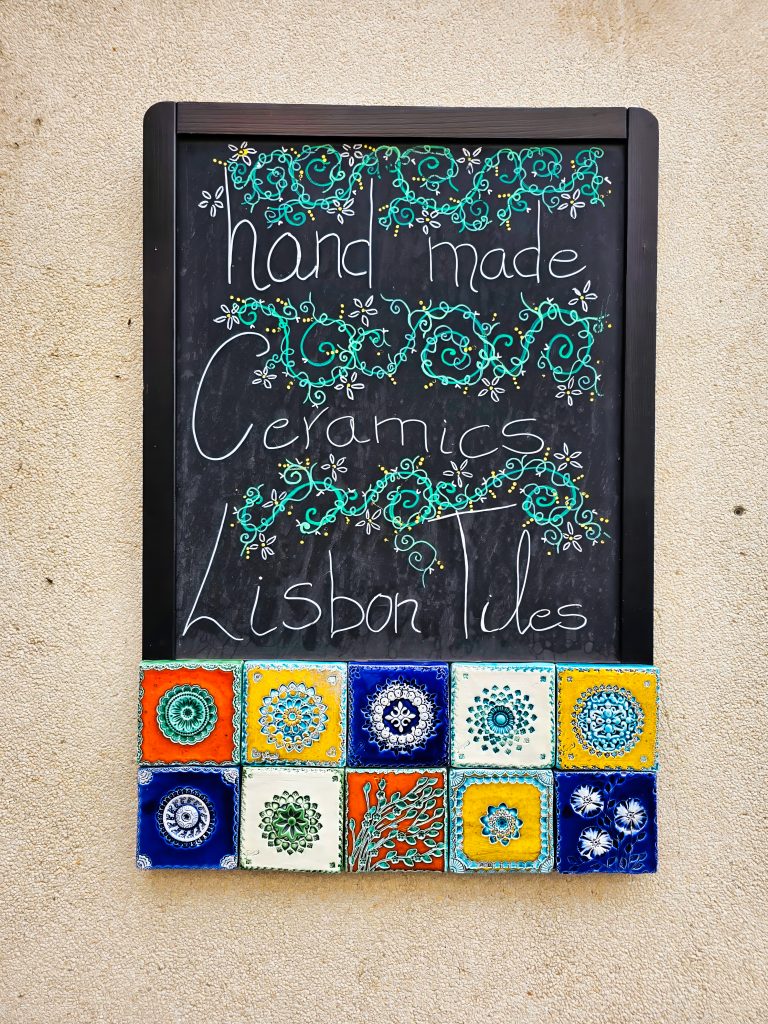
Lisbon is the place to know about Azulejos or tiles as we call them.
With a background that goes back to the Moorish presence in the city, the intricate and often colorful patterns of tiles are a visual identity mark of Portugal. From vibrant patterns to historical images, one may even see them covering entire building facades!
Get lost in Alfama
One of Europe’s oldest neighborhoods, Alfama has a charming network of narrow alleyways, artisan shops, and historic cathedrals such as the Cathedral Se.

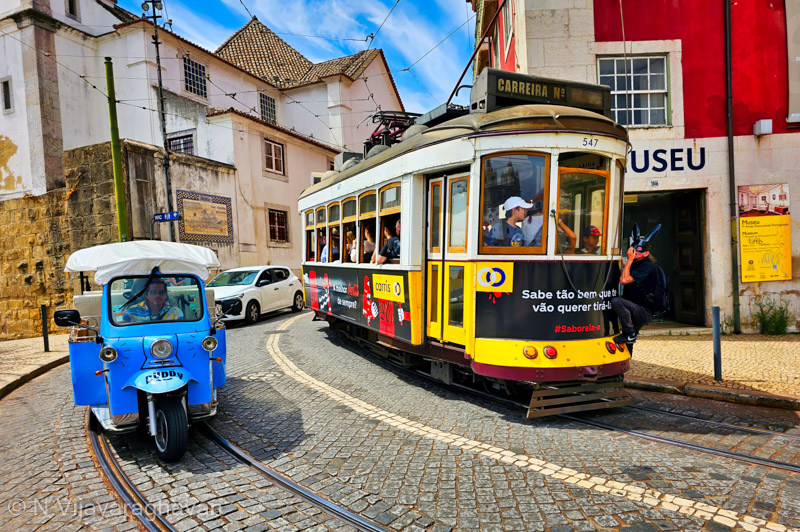
Spot the Batman!
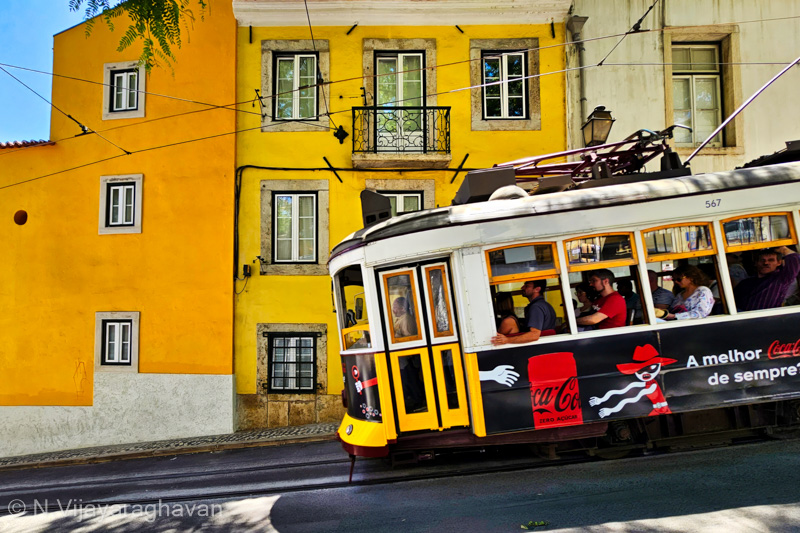
At many places in Alfama, elderly women stand outside their little shops with shots of the Portuguese liquor Ginjinha for 1 euro. The sour cherry liqueur is delicious, only made better by it being served in a chocolate shot glass! It is something that is uniquely Lisbon.
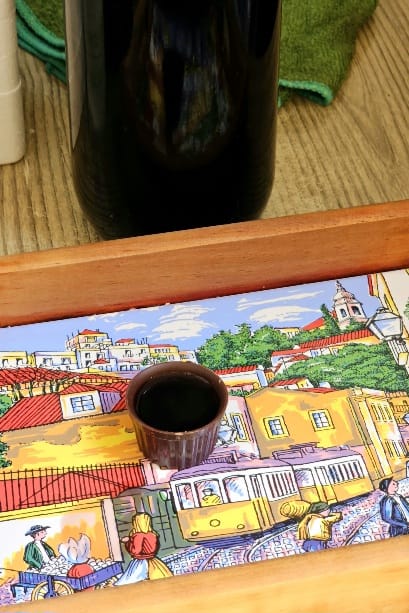
Cathedral Se
Se’ was built in 1147 and survived the big earthquake in 1755. It is the main cathedral of Lisbon and is usually a spot to photograph trams against its backdrop.

Bairro Alto
This district is supposed to be one of the most liveliest parts of Lisbon.
Carmo Convent
Carmo Convent is a hauntingly beautiful Gothic church built in the 14th century. The 1755 earthquake caused serious damage and almost destroyed the church. It was then decided to leave the look of this roofless chapel as it is. It is a pretty impressive ruin.

Pink Street
The vibrant Rua Nova do Carvalho, is a unique and lively street that was painted pink as part of a revitalization project, and it has since become a hotspot for nightlife, featuring bars, clubs, and restaurants.
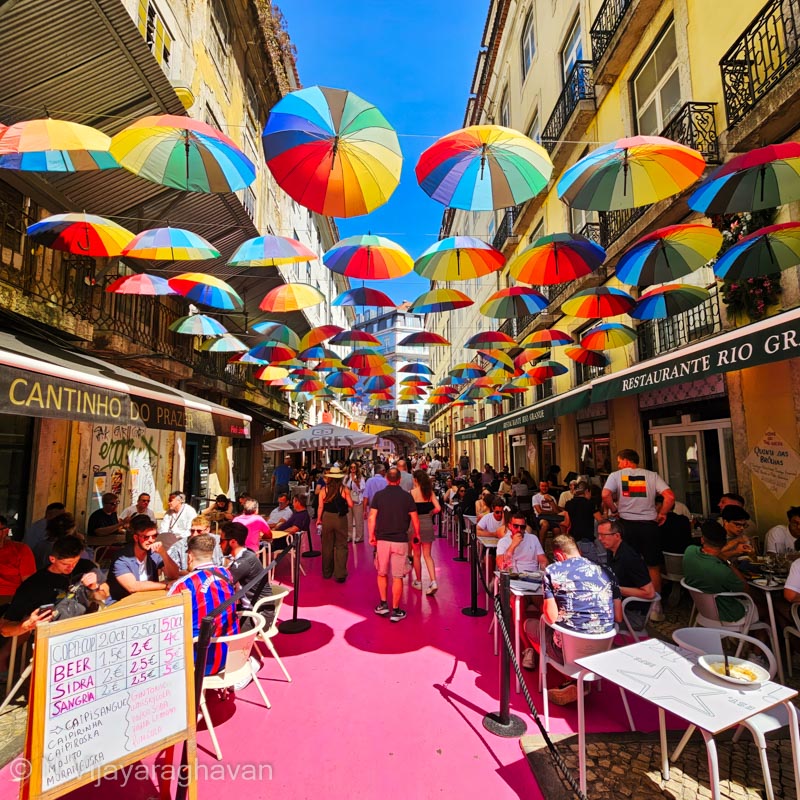
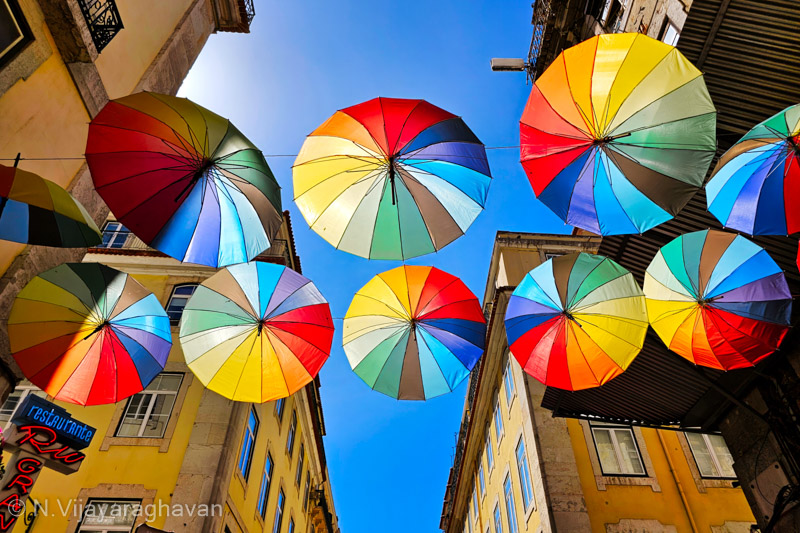
Elevador de Bica
Lisbon is known for its historic funiculars, which are cable-operated trams that transport people up and down the city’s steep hills. The Elevador de Bica is an iconic one and easily one of the greatest attractions. One tram is left clean with its vintage charm while the other one is covered with graffiti.


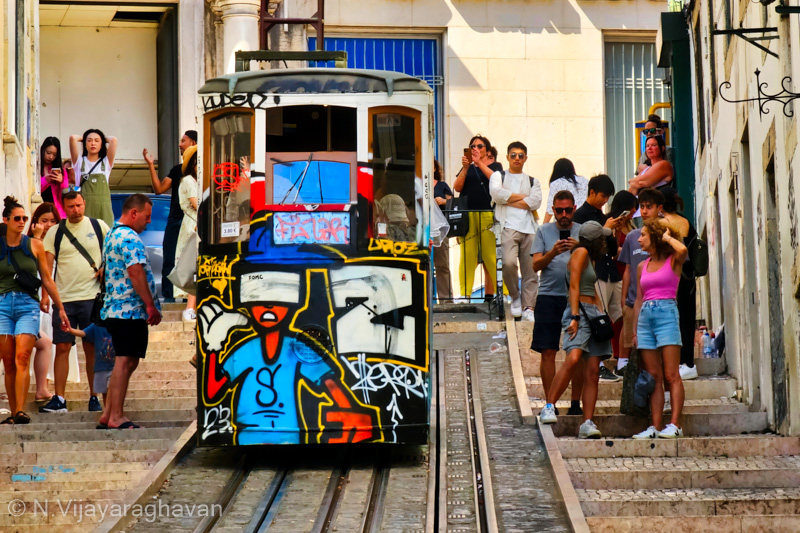

Belem
The area around Belém became an important harbor for sailors departing from and arriving in Lisbon during the Age of Exploration, an era when Portugal dominated the seas. One of the key attractions is the Belem Tower – a fortress built centuries ago to guard the entrance to Lisbon’s harbor.
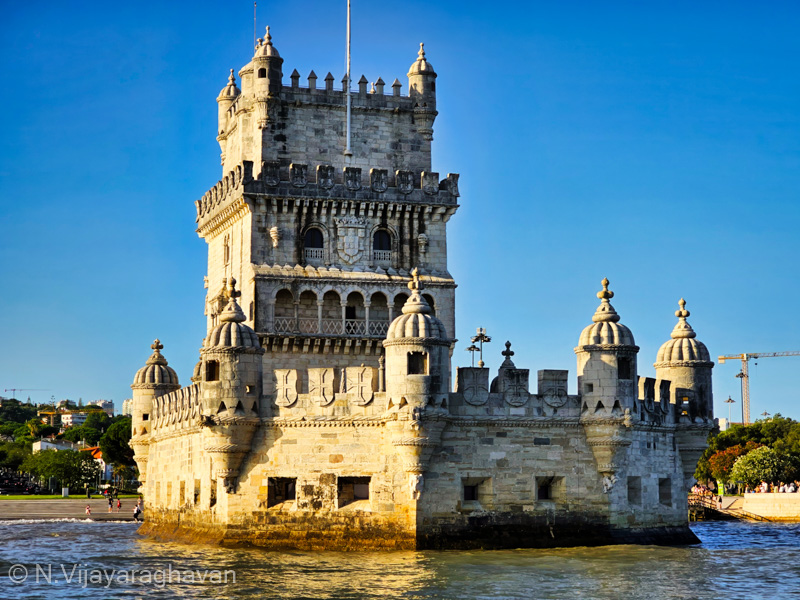
Padrão dos Descobrimentos
Located not far from Torre de Belém is the Monument to the Discoveries or called Padrão dos Descobrimentos in Portuguese. It’s dedicated to all the great sailors and discoverers from Portugal.
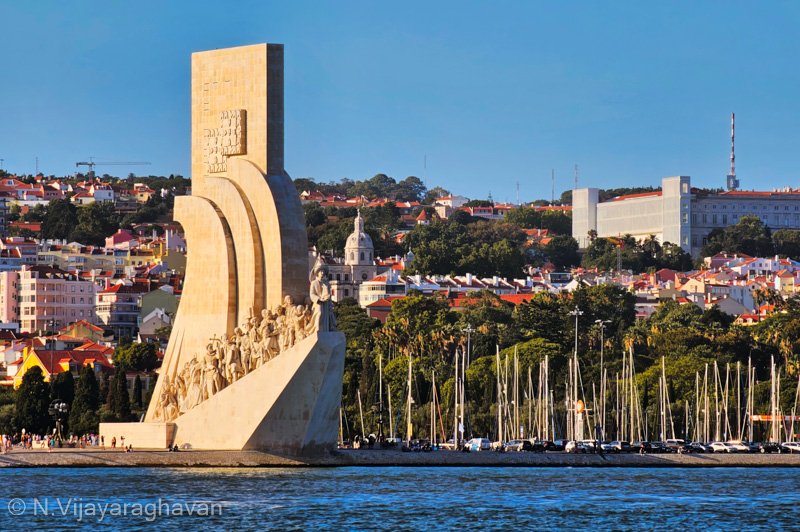

Pasteis de Belem
No visit to Lisbon would be complete without indulging in the famous Pasteis de Belém. This historic bakery has been serving these warm, flaky custard tarts using a secret recipe that dates back to 1837. Sprinkled with cinnamon and powdered sugar, its taste reminded me of the French dessert – ‘mille feuille’, but warmer. Visiting this restaurant seems like a pilgrimage for tourists!
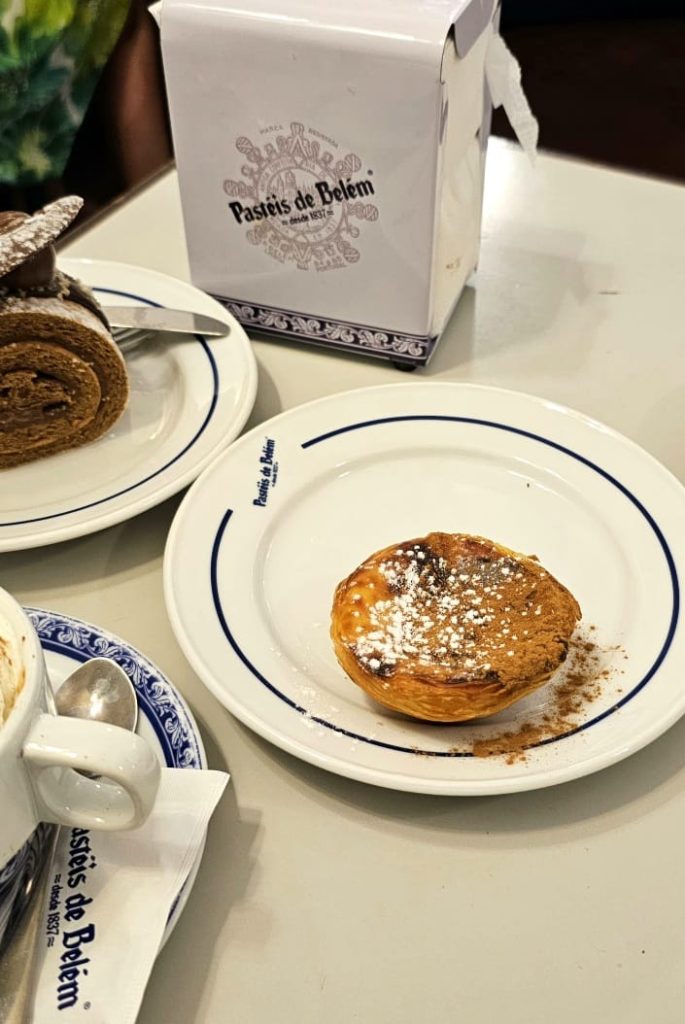
River Tagus cruise
Day 1 concluded with a relaxed sunset cruise on the Tagus River. It was one of the highlights of the trip and a must-do in Lisbon. It was a small group tour on a vintage boat. The light was beautiful as we sailed along the serene waters, admiring Lisbon’s landmarks bathed in the warm golden light. From the iconic Belem Tower to the 25th of April Bridge, the city’s skyline takes on a magical glow. The ‘Cristo Rei Statue’ is also visible easily though it is located on the other side of the river. This statue was inspired by the Christ the Redeemer statue in Rio de Janeiro and was built in the 1950s.
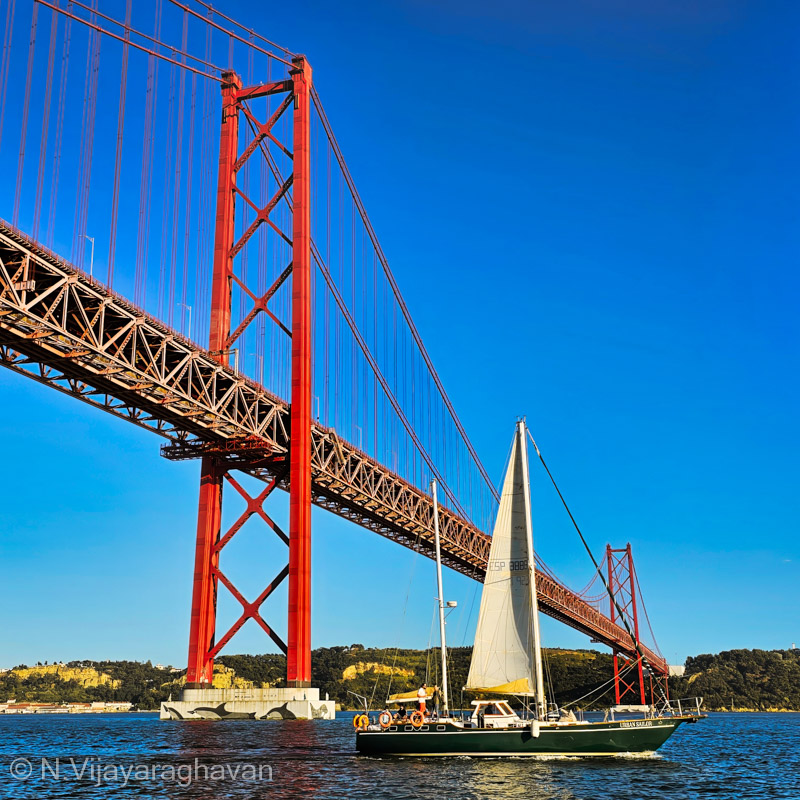

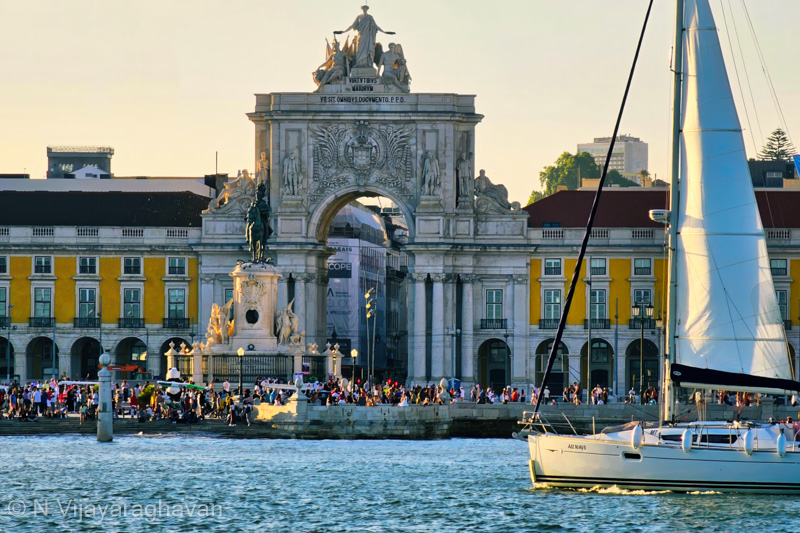
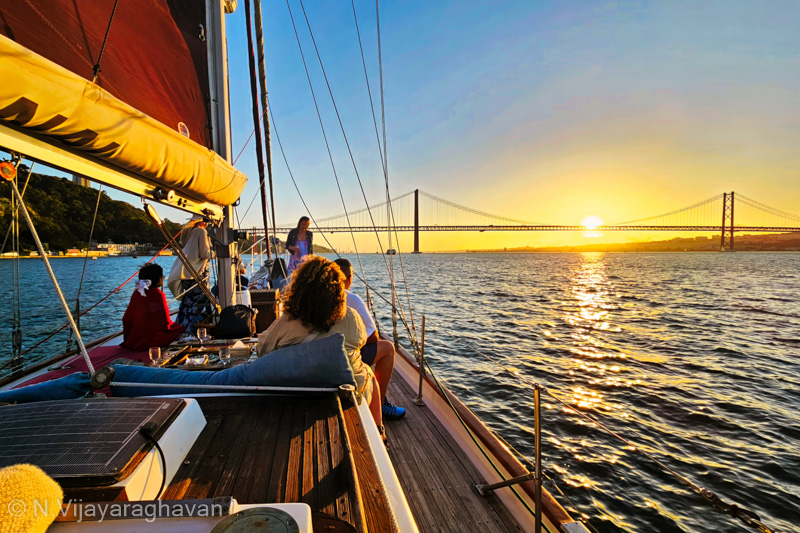
Tram 28
I kicked off Day 2 with a ride on the iconic Tram 28. As the vintage tram meanders through Lisbon’s historic districts, one can admire the city’s colorful streets, and capture the vibrant facades, picturesque squares, and the unique charm of each neighborhood it passes.
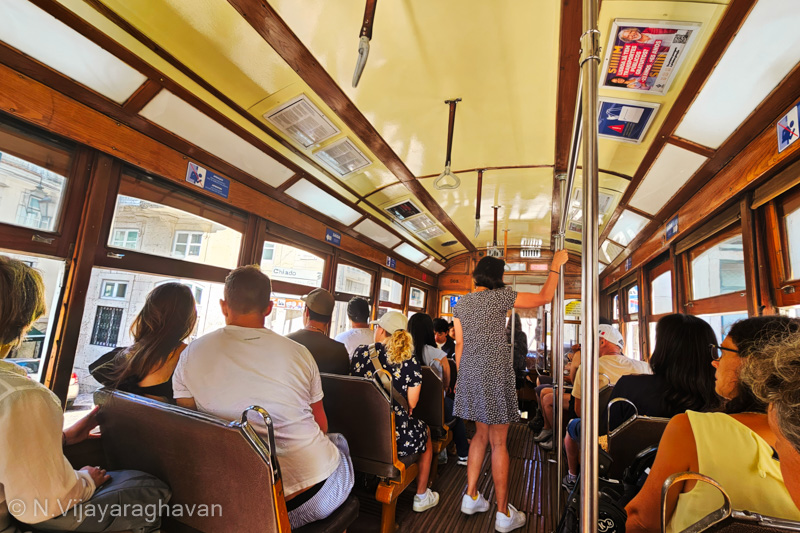
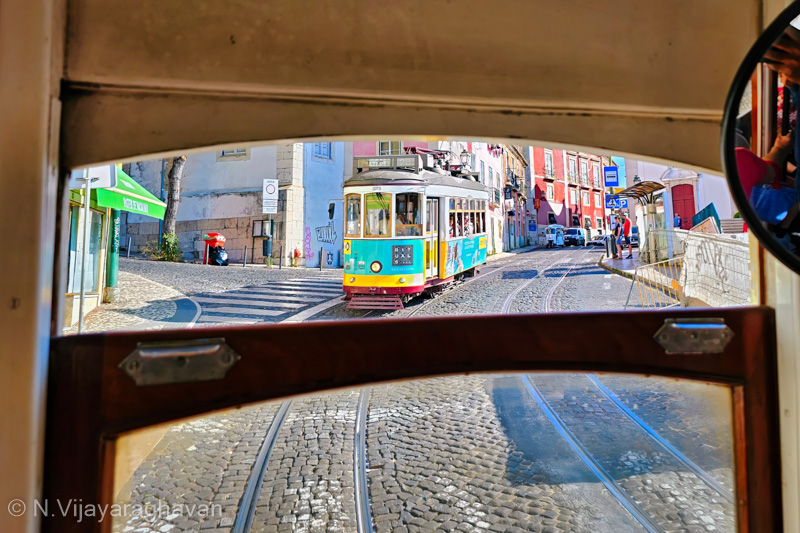
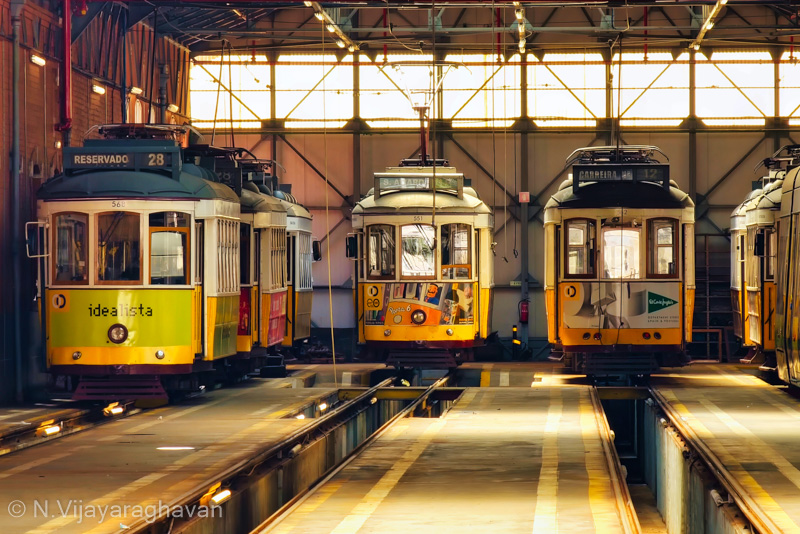
Alcantara
LX Factory
This former industrial complex, now a creative hub, offers vibrant street art, quirky shops, and trendy restaurants. It’s a kind of hipster place with a great atmosphere.
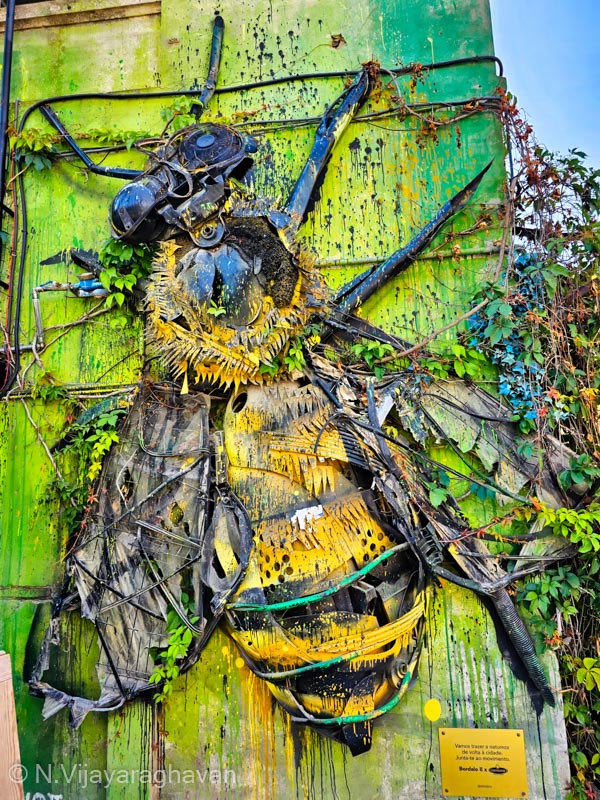
Sunset from Castelo de Sao Jorge
The last stop of my trip was also the same place as the first. The castle offered a splendid setting to witness a spectacular sunset. From the castle’s ramparts, one can admire the changing colors of the sky, providing the perfect backdrop for capturing the city’s breathtaking beauty.
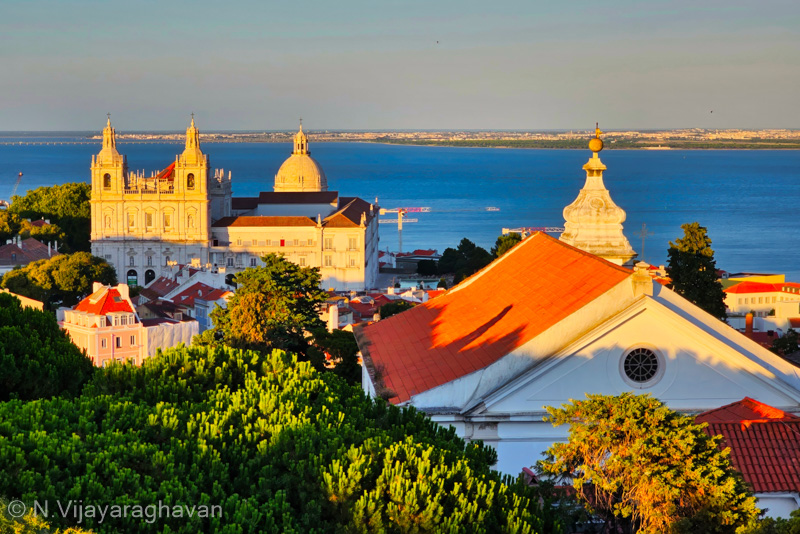
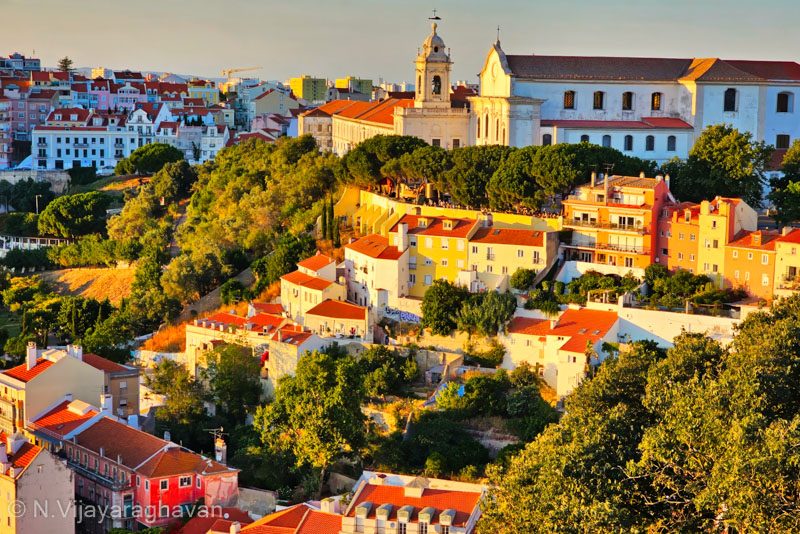
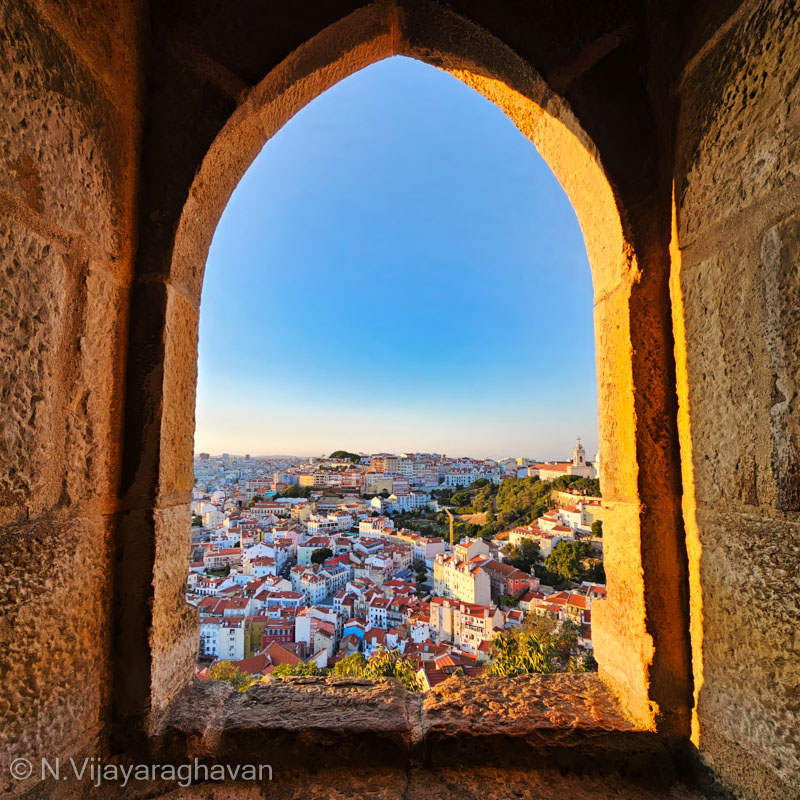

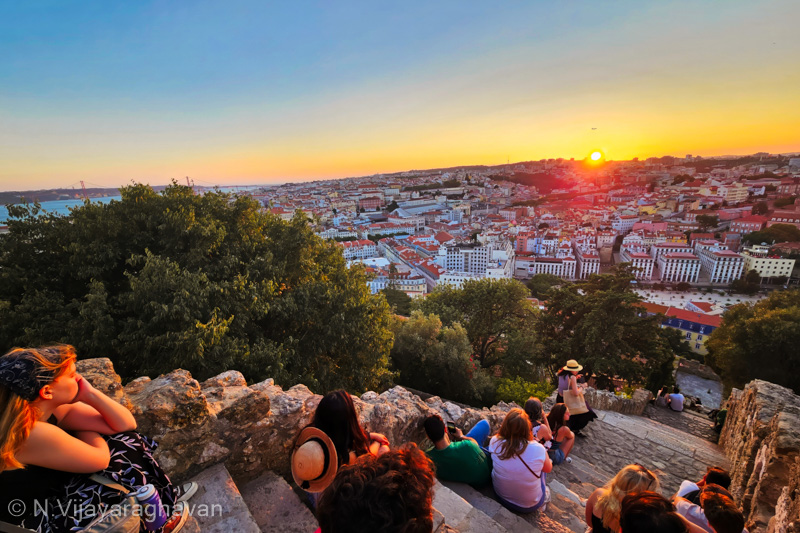
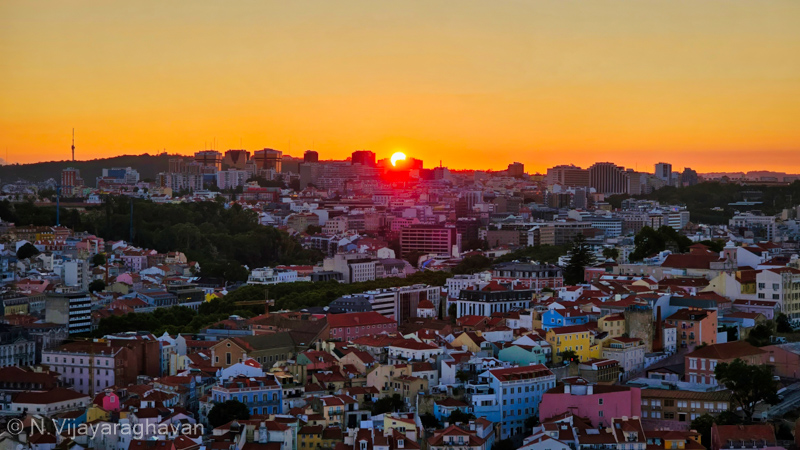
Wrapping up with Fado
The trip was wrapped up with a fado session in one of the restaurants in Alfama. The overall trip was a delight, with the city offering a perfect blend of culture and fun.
From the vintage trams to the bustling narrow streets of Alfama, the flavors of Pastéis de Belém to the vibrant LX Factory, there’s always something exciting waiting around every corner in Lisbon.
